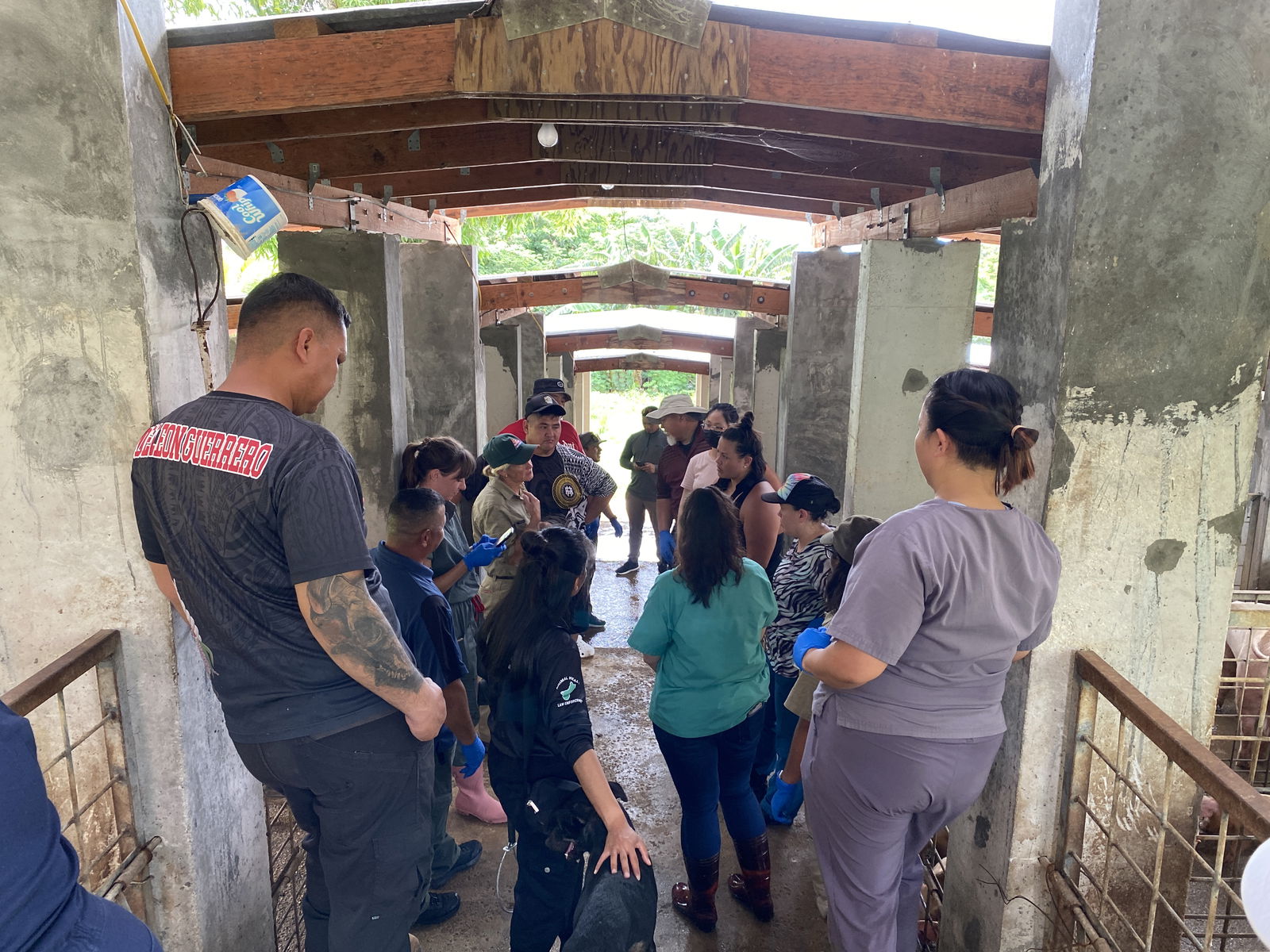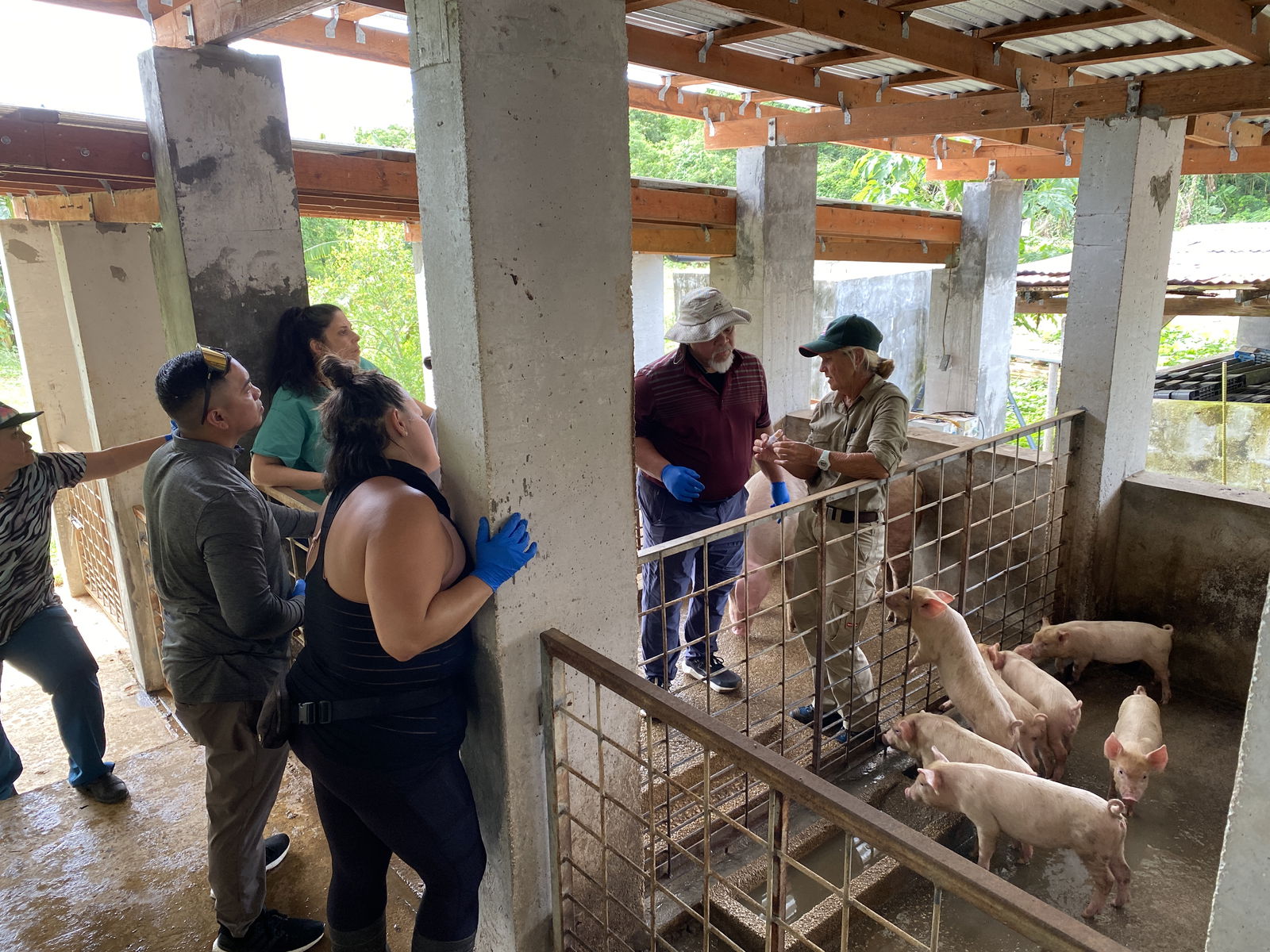THE CNMI Department of Lands and Natural Resources, the Secretariat of the Pacific Community, and Australia’s Department of Agriculture, Fisheries and Forestry or ADAFF are training residents of Guam, Palau, and the CNMI in animal husbandry and livestock handling as part of collaborative paraveterinary training.
Variety was at Kumoi Farms in As Perdido on Monday as trainees learned to draw blood samples from pigs.
There were 16 participants, of whom five were from Saipan, three from Tinian, one from Rota, six from Guam, and one from Palau. SPC and ADAFF each sent two trainers.
Elenoa Salele, SPC’s veterinarian and animal production services coordinator, said the participants had been training online for 16 weeks. This “summer school” paravet session is the hands-on component.
“We train livestock officers on how to treat sick animals, how to diagnose a sick animal, what to do, how to treat them, what treatment to apply. If they suspect a disease outbreak, what to do,” Salele said. “Whatever we teach on the ground has to come from the ministry — what they request. What we’re giving out is how to treat sick animals and proper husbandry practices. Castration and post-mortem are also part of the training.”
According to Salele, the training addresses a shortfall in animal care throughout Oceania.
“This training came about due to the lack of qualified veterinarians across the Pacific. It’s not just for the CNMI or Guam. This is the challenge that we face across the Pacific,” she said.
According to a release from SPC, a hands-on training session took place in the Marshall Islands from Nov. 4 to 8, 2024.
Training sessions have also been conducted in the Cook Islands, Fiji, Kiribati, Samoa, Palau, Vanuatu, Tonga, and beyond.
Lauren Cabrera, DLNR’s animal health manager, said the goal of the training is to improve healthcare for food animals as a way to boost production, enhance food security, and strengthen biosecurity.
“Basically, the blood samples are just for surveillance, which is something that hasn’t been done here for a long time,” Cabrera said. “You would take blood samples sporadically and check them for diseases. We’re practicing that because, in the event some disease ever came here, we would want to be able to draw those samples and send them off for testing.”
“For nonemergency biosecurity situations, castrating a pig makes them taste better, makes them friendlier and easier to handle, and makes them fattier. It helps increase their production. You get more meat from the animal and more bang for your buck as a rancher.”
Participants will also receive biosecurity and husbandry training for chickens and cattle. The training will likewise be held at Kumoi Farms.
A practical exam is scheduled for July 10, followed by a written exam on July 11.
According to its website, SPC’s mission is to “progress all Pacific peoples’ rights and well-being through science and knowledge.”

Lauren Cabrera, right, restrains a pig so Ruby Ma can draw its blood.

Sixteen individuals are undergoing paravetrinary training at Kumoi Farms.

A trainer from Australia’s Department of Agriculture, Fisheries and Forestry demonstrates how to draw blood from pigs.











